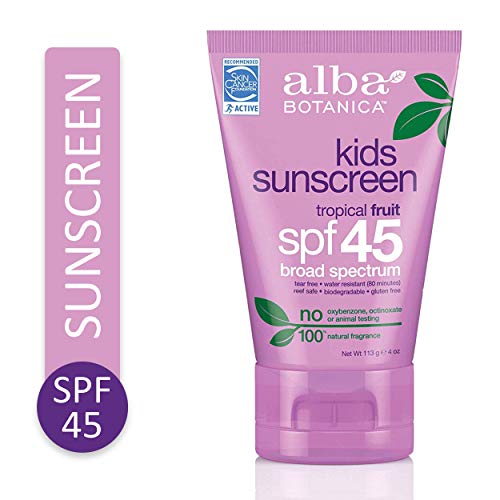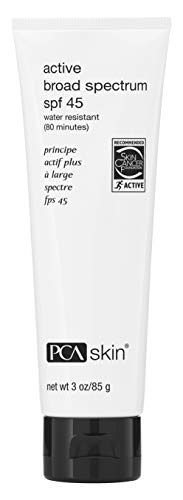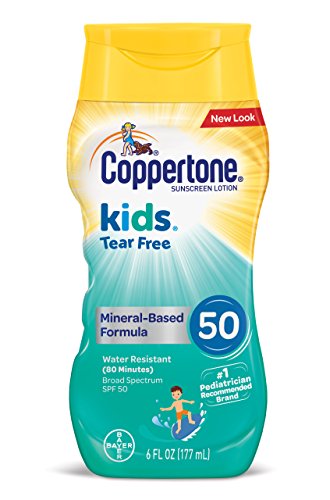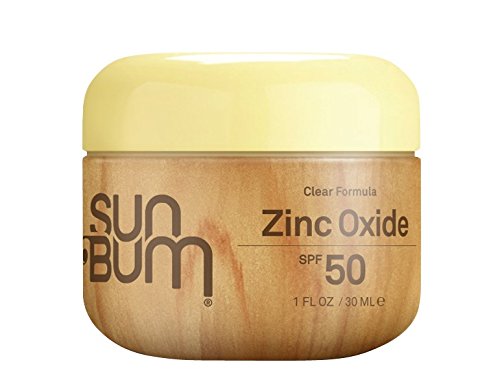
Whether youre enjoying a family beach day or making a quick stop at the playground, sunscreen is a must for your kids, whether theyre babies or teens (and you, too, by the way). The suns ultraviolet rays can burn skin in as little as 15 minutes even when its cloudy and early-in-life sunburns greatly increase the risk of skin cancer down the road. For this reason, it is crucial to protect kids from damaging sun exposure anytime theyre outside.
For infants under 6 months old, that means keeping them out of the sun completely. Sun exposure can be extremely dangerous for babies due to their thin skin and relative lack of melanin, the skin pigment that provides some sun protection, Anna L. Chien, M.D., a board-certified dermatologist in Baltimore and spokesperson for The Skin Cancer Foundation, told Fatherly. But because babies skin is so sensitive, she says, sunscreens can be too irritating. So, for times when the sun cant be avoided, dress infants in long sleeves and pants and a wide-brimmed hat or bonnet, and a use a stroller with a canopy or hood.
Children 6 months and up, however, should wear sunscreen on top of seeking shade and wearing hats, sunglasses, and sun-protectiveclothing that covers as much skin as possible. But with so many different sunscreens on the market, how do you choose?
What You Need to Know About Sunscreen
When it comes to selecting the best sunscreen for your family, there are a few hard-and-fast rules that experts across the board agree on.
- Check the SPF: Any sunscreen you put on your kids should be SPF 30 or higher. Short for sun protection factor, SPF is a measure of a products ability to prevent ultraviolet B rays from burning skin. While youll find products with SPF all the way up to 100, studies have shown that the level of additional UVB protection youll get above SPF 30 is minimal.
- Look for Broad-Spectrum: Because SPF applies to only UVB rays and not ultraviolet A rays the second thing to look for on labels is broad-spectrum. This means the sunscreen will safeguard against both UVB and UVA rays, the type that penetrate the skin more deeply to cause wrinkles, age spots, and that leathery look. UVA rays are also the main culprits in skin cancer, from deadly melanoma to the all-too-common basal and squamous cell carcinomas.
- Choose Water-Resistant: Third, look for a sunscreen labeled water-resistant, especially if the kiddos will be swimming or sweating. Because no sunscreen is truly waterproof, the FDA no longer allows brands to make that claim. But if companies have tested and shown that their product can remain effective in water for up to 40 or 80 minutes, then they can legally use the term water-resistant on labels, followed by the tested-for time frame.
-
Apply Properly: None of these factors matter if sunscreen isnt applied properly. To achieve full efficacy, it is crucial to use enough sunscreen, not spread it too thin, and reapply, Chien says. Thirty minutes before kids go outside, apply to all exposed areas of the body not covered by clothing, such as the face, ears, neck, and back of the hands.Reapply every two hours, or more frequently ifyour child is going in the pool or sweating.
- Choose a Cream or Lotion Over Spray or Stick: Ensuring full coverage is exactly why, lastly, experts recommend lotions and creams over spray and stick sunscreens, at least for the first application. A big problem with spray sunscreens is people miss areas and you dont get an even application and you dont want to inhale it, Anna Bender, M.D., assistant professor of dermatology at Weill Cornell Medical College in New York, told Fatherly. Start with a sunscreen cream or lotion; then sprays are okay for touch-ups. Just use them in a well-ventilated area and rub them in afterwards.Bender says sunscreen sticks are fine for touchups as well, as long as you swipe each area at least twice to ensure adequate coverage.
All the following sunscreens have the Skin Cancer Foundation seal of recommendation:
This mineral-based sunscreen provides broad spectrum protection, is water resistant for up to 80 minutes and is coral reef-friendly.
Alba Botanica Tropical Fruit Kids SPF 45 is tear-free, lightweight, and is made without oxybenzone, octinoxate or gluten.
Active Ingredients: Avobenzone, homosalate, octocrylene, octyl salicylate
A combination sunscreen and moisturizer, this one from Eucerin gives you SPF 30 sun protection.
You get serious protection against dry and the skin with this two-for-one product.
Active ingredients:Avobenzone, homosalate, octisalate5, octocrylene
This sunscreen stick is water-resistant for up 80 minutes and is formulated with zinc oxide and titanium dioxide.
If youre sick of holding your kid down to apply sunscreen (and who isnt), this sunscreen stick is your savior. It goes on smoothly, and it stays on.
Active ingredients: Titanium dioxide, zinc oxide
This sunscreen is made with zinc oxide, and is free of fragrance, parabens, phthalates, dyes and irritating chemicals. Plus it's tear-free.
Neutrogenas sunscreenprovides 100 percent mineral sun protection, with zinc oxide as its only active ingredient. Its effective for 80 minutes of swimming.
Active ingredient: Zinc oxide
A perpetual sunscreen favorite, this one is oxybenzone-free and octinoxate-free, and suitable for sensitive skin in older kids.
Note that this is not a mineral-based sunscreen, but is rated highly by Consumer Reports for its general effectiveness.
Active ingredients: Avobenzone, homosalate, octisalate, octocrylene
A great sunscreen for those on the go, this mineral-based sunscreen is water-resistant and won't drip into your eyes and sting them when you sweat. It's a brand consistently recommended by dermatologists.
A solid sunscreen with zinc oxide as its main active ingredient, EltaMDs sunscreen is fragrance-free, oil-free, paraben-free, sensitivity-free and noncomedogenic.
Active ingredients:Zinc oxide, octinoxate, octisalate
If your kids complain about sticky sunscreen, then try this one, which goes on silky-smooth and they'll forget it's even there.
While its packaged for adults, this mineral-based sunscreen is safe for kids six months and older.
Active ingredients:Titanium dioxide, zinc oxide
This reef-friendly sunscreen is a nice, solid go-to for everyday use with SPF 30 protection.
This SPF 30 sunscreen is ultra-moisturizing and lightweight. The brand also makes mineral-based sunscreens, if thats your preference.
Active ingredients:Avobenzone, homosalate, octisalate, octocrylene
Another sunscreen that has the Skin Cancer Foundation's approval, this one is great for water bugs, because it won't drip into their eyes.
This SPF 45 sunscreen is water resistant for up to 80 minutes and wont burn kids eyes by dripping into them. Use this one all day, every day.
Active ingredients: Zinc oxide, silybin, caffeine, octinoxate, and octisalate.
This SPF 50 sunscreen is made with zinc oxide and is free of fragrances, oil, and dyes.
This is a mineral-based sunscreen thatswater-resistant for 80 minutes. Zinc oxide is one of the active ingredients.
Active ingredients: Octinoxate, octisalate, and zinc oxide.
One of our favorites, this Sun Bum zinc oxide cream is made with reef-friendly ingredients.
This is a mineral-based sunscreen goes on clear and wont clog pores, so you can use it on the face and body,
Active ingredients: Octinoxate, octisalate, octocrylene, zinc Oxide
Chemical Versus Mineral Sunscreen
Once youve narrowed the options down to just water-resistant, broad-spectrum lotions and creams that are SPF 30 or higher, there is still a mind-boggling array of sunscreens to choose from. Now your decision comes down to active ingredients, which youll see listed in a box on the back of the bottle.
Active sunscreen ingredients fall into two basic categories: chemical and mineral. Chemical ingredients, such as oxybenzone, avobenzone, octinoxate, octisalate, octocrylene, and homosalate, work by forming a thin film on the skin that absorbs, and therefore disarms, UV rays. Except for oxybenzone, which by itself is broad-spectrum, each of these chemicals absorbs either only UVA or only UVB raysnot bothwhich is why they are rarely used alone. Instead, sunscreen brands usually combine two or more chemicals to create a broad-spectrum product.
Mineral sunscreen ingredientsthere are two: zinc oxide and titanium dioxidework entirely differently. Rather than absorb UV rays, they sit on the top layer of skin and physically reflect, scatter, and block them, says Chien. And unlike most chemical ingredients, zinc oxide and titanium dioxide each guard against both UVA and UVB rays.
Whether youre looking at the label of a mineral- or chemical-based sunscreen, youll see a percentage listed after each active ingredient. These refer to the concentration of the ingredient, but our dermatologists say to not worry too much about them.
I usually dont guide by percentages because while, ideally, youd want to aim for the highest percentage, higher percentages also mean the sunscreen will be thicker and harder to rub in, Ivy Lee, M.D., board-certified fellow of the American Academy of Dermatologyand adjunct clinical assistant professor of dermatology at the University of Southern California Keck School of Medicine, told Fatherly. Also, the higher percentages sometimes lull people into thinking they dont need to reapply. Instead of focusing on percentages, look at the active ingredients and whether the sunscreen is broad spectrum.
Which Sunscreen Is Best?
Between chemical and mineral, which kind is safest and most effective for kids? While the Food and Drug Administration, which regulates sunscreens, considers 13 different chemical ingredients and the two mineral ingredients to be generally recognized as safe and effective, or GRASEfor now anyway; more on that laterall of the dermatologists Fatherly spoke with prefer mineral sunscreens for kids, for a number of reasons.
I like mineral for simplicitys sake, Lee says. Both titanium dioxide and zinc oxide are broad spectrum, whereas with chemicals, some are more effective than others so it depends on combination to offer broad-spectrum coverage. Also, because mineral sunscreens tend to be opaquer, you know exactly where you have applied and where you havent, and they are easy for kids to apply themselves.
Mineral sunscreens are also less likely to irritate kids skin than chemical products because they sit on top of the skin versus soaking in. Kids can get allergic contact dermatitis to the active ingredients in sunscreen, which is more likely with chemical sunscreens than mineral, Lee says. But the preservatives can also cause irritation. Thats why I recommend sticking with simple, bland but effective ingredients such as zinc oxide and titanium dioxide.
Also know that a sunscreen that doesnt bother your skin could easily trigger theirs. Children have more sensitive skin than adults; therefore, mineral sunscreens are a better option for them, Chien says. You may want to test sunscreen on the inside of yourchilds wrist. If they have a little irritation, try another sunscreen.
It is mainly because of the skin-sensitivity issue that certain sunscreens are marketed specifically for kids or babies. But in most cases, this merely means that the product is made with active mineral ingredients instead of chemicals; there may also be no fragrances, minimal preservatives, or other potentially irritating components in the lotion. But a kid or baby designation does not necessarily speak to the efficacy of the product. Therefore, when shopping for sunscreens, dont feel limited to only those marketed for youngsters.
The main knock against mineral sunscreens has always been their cosmetic appeal. Mineral, or physical, sunscreens tend to be thicker and may leave a white cast behind, Chien says. However, many new formulations aremicronized, meaningthe productsparticles are small enough to blend and disappear into the skinmore easily.
Are chemical sunscreens truly safe?
Despite chemical sunscreens GRASE status, concerns have been raised about a few in particular. Most notably, oxybenzone, one of the most commonly used because of its ability to absorb both UVA and UVB rays, has come under fire. Preliminary studies conducted on animals have suggested that oxybenzone could mess with hormonal systems within the body, while observational analyses of humans have revealed a potential link between the chemical and lower testosterone levels and lower birth weights.
However, while this preliminary data is worth noting, it is far from definitive and does not prove that oxybenzone poses a real health threat to humans. Old research, whereoxybenzonewas force-fed to immature rodents, suggested that oxybenzonemay cause hormone disruption, Chien says. Buttopical application by humans does not equal the oral dosage administered to the rodents. More recent human studies have shown absolutely no change in hormonal levels in individuals using sunscreens containingoxybenzone.
Bender is also not worried about oxybenzone posing a health threat, especially since we regularly excrete it via urine versus it accumulating in the body like many other chemicals do. Still, for parents who want to be extra cautious given the research, this could be yet another reason to choose mineral sunscreen for kids over products containing oxybenzone.
So, for now, oxybenzone, homosalate, octocrylene, and other chemical sunscreens are still considered safe and effective.
The Environmental Impact of Sunscreen
While the health risks associated with chemical sunscreens may be unproven, those arent the only concerns about them. Many have the potential to harm aquatic ecosystems. Since they are not easily removed by wastewater treatment systems, these chemicals inevitably end up in waterwaysin addition to the sunscreen chemicals that go directly into lakes, rivers, and oceans when they come off of our bodies while we swim and recreate.
In fact, according to the National Park Service, up to 6,000 tons of sunscreen enters coral reef areas annually. Studies have shown that oxybenzone and octinoxate, specifically, bleach out the coral, potentially causing irreparable harm to these already delicate ecosystems. These chemicals have also been detected in the bodies of fish around the globe, which could negatively impact food chains.
Citing these grave ecological concerns, Hawaii and the Western Pacific nation of Palau both banned the sale of sunscreens containing oxybenzone and octinoxate in 2018. Key West, Florida, followed suit earlier this year, and a similar ban has been proposed in California. Outdoor retailer REI has agreed to stop selling oxybenzone sunscreens starting in 2020.
Due to growing awareness of the environmental issues associated with oxybenzone and octinoxate, some sunscreens not containing either ingredient are now claiming to be reef safe. However, according to Consumer Reports, there is no agreed-upon or government-regulated definition for this term. Additionally, oxybenzone and octinoxate are simply the most studied of the sunscreen chemicalsothers may very well impose similar damage on coral reefs. If this is a concern, your best bet is to stick with products made with zinc oxide or titanium dioxide, which are not as ecologically harmful.
Every product on Fatherly is independently selected by our editors, writers, and experts. If you click a link on our site and buy something, we may earn an affiliate commission.
Related Articles:
- Paul Bettany Says 'WandaVision' Is Going to Be "Bonkers"
- How to Take Your LEGO Building to New Heights, According to Real-Life LEGO Masters
- Two Stories About Kobe Bryant
- Captain Marvel Might Be Leading Two Superhero Teams in Future MCU Films
The post The Best Sunscreens for Babies and Kids appeared first on Fatherly.










